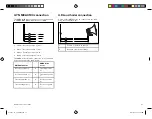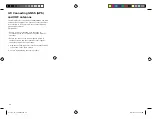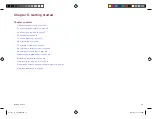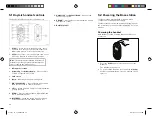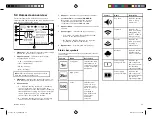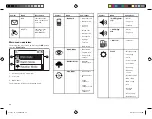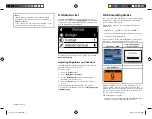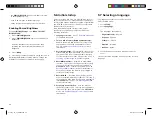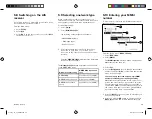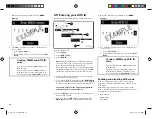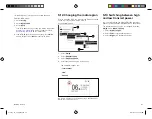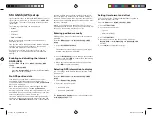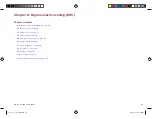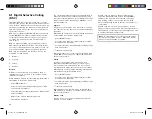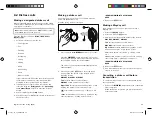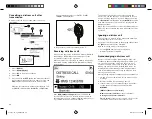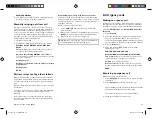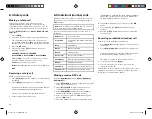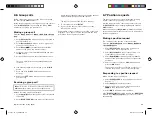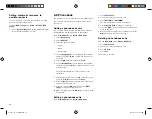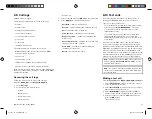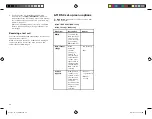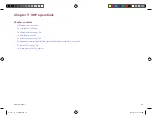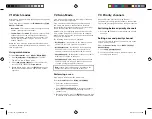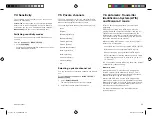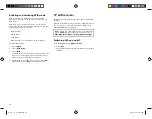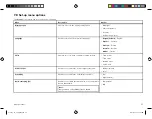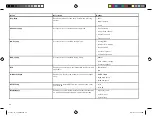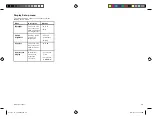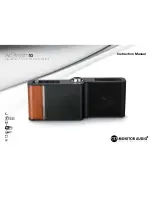
6.1 Digital Selective Calling
(DSC)
Traditional VHF radio systems require users to listen
until someone speaks, and then determine whether the
call is for them. DSC ensures that calls are received by
alerting or announcing the intended recipient(s) first so
they are ready to listen to the subsequent message on
the relevant channel.
DSC is part of the Global Maritime Distress and Safety
System (GMDSS), a maritime communications system
for emergency and distress messages and all types
of routine communications such as ship-to-ship or
ship-to-shore.
DSC is a digital signalling system, which operates on
VHF channel 70. DSC calls include other data such as
your vessel’s identification number, purpose of the call,
your position and the channel you want to speak on.
DSC calls can be divided into 4 categories and are
prioritized as shown below:
1.
Distress
2. Urgency
3.
Safety
4.
Routine
Distress
A Distress call should only be used when there is
imminent danger to a vehicle or person that requires
immediate assistance.
When making a distress call the following information is
transmitted to all stations within range:
• Vessel MMSI number.
• Vessel position (must be input manually if no GPS
position data is available).
• Local time (must be input manually if no GPS position
data is available).
• Nature of the distress (when designated).
• Transmission frequency.
The call is automatically repeated at approximately 4
minute intervals until it is acknowledged either by a
coast radio station (CRS) or a vessel within radio range.
Distress calls must be followed by a MAYDAY call on
priority channel 16.
Urgency
An urgency call should be used when there is danger
to a vehicle or person that does not require immediate
assistance.
When making an urgency call the following information
is transmitted to all stations within range:
• Vessel MMSI number.
• Vessel position (must be input manually if no GPS
position data is available).
• Local time (must be input manually if no GPS position
data is available).
• Transmission frequency.
Once an urgency call is sent it must be followed with
a PAN PAN voice message on channel 16 and include
the necessary details.
Safety
A safety call should be used when there is an
important navigational warning or meteorological
forecast/broadcast. Safety alerts can also used for
communications during search and rescue operations.
When making a safety call the following information is
transmitted to all stations within range:
• Vessel MMSI number.
• Vessel position (must be input manually if no GPS
position data is available).
• Local time (must be input manually if no GPS position
data is available).
• Transmission frequency.
Once a safety call is sent it must be followed with a
SECURITE voice message on channel 16 and include
the necessary details.
Routine calls
Routine calls are used for contacting other vessels,
marinas, or shore stations.
Routine calls are made on channel 70 using the
dedicated Maritime Mobile Service Identity (MMSI)
number of the station to be contacted, selecting a
VHF working channel and sending the call. Both
radios automatically switch to the chosen channel for
conversation.
Routine calls can also be made to groups — When
groups of ships need the same information (yacht races,
club rallies etc.) a special group-call identity can be used
to enable restricted broadcast calls.
Note: To transmit precise positions, the radio must
be interfaced to a GPS receiver. Otherwise, regular
manual position updating is required.
44
81377-1-en_US_PRINT.pdf 44
12/21/2017 9:05:37 PM


